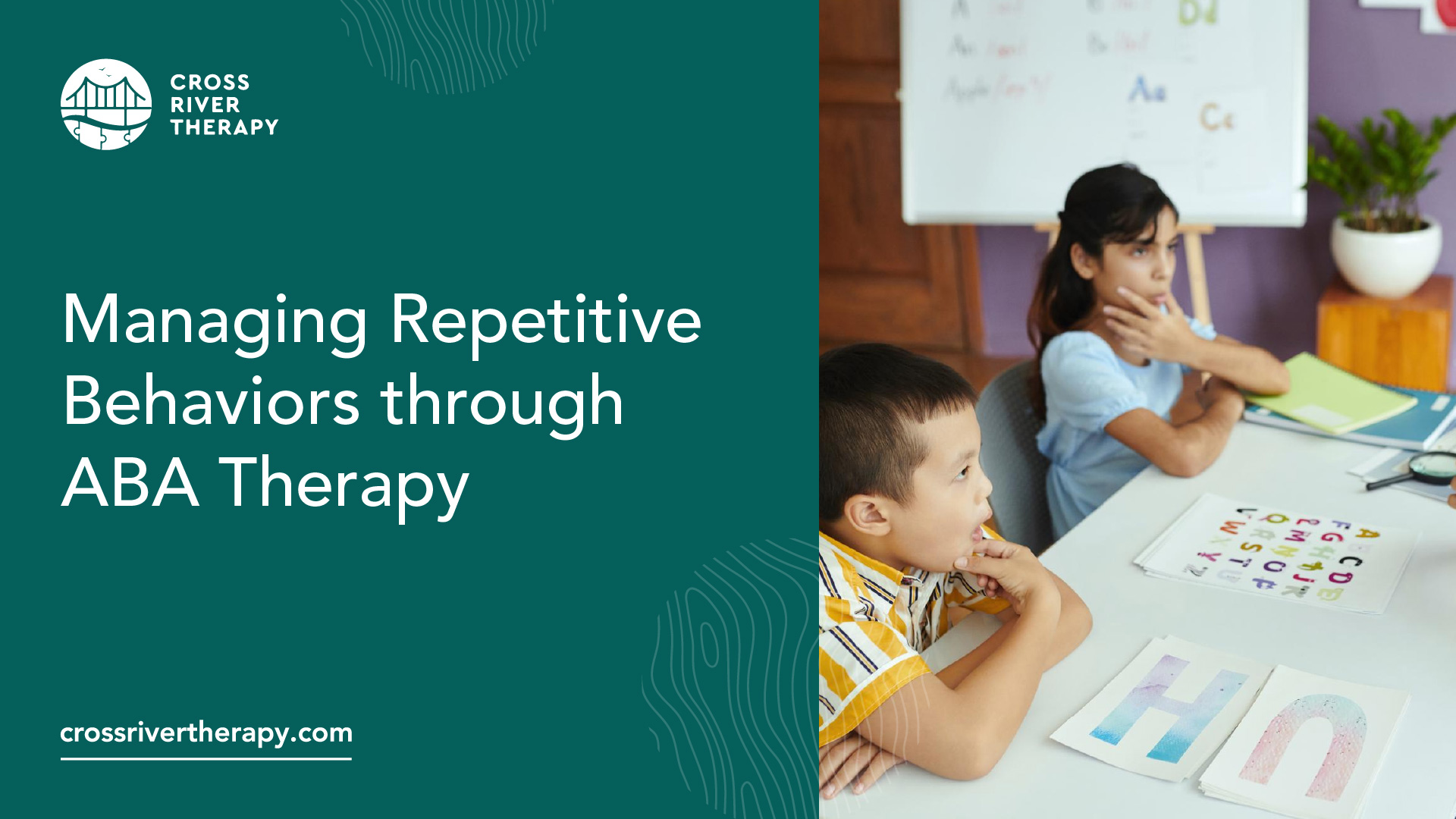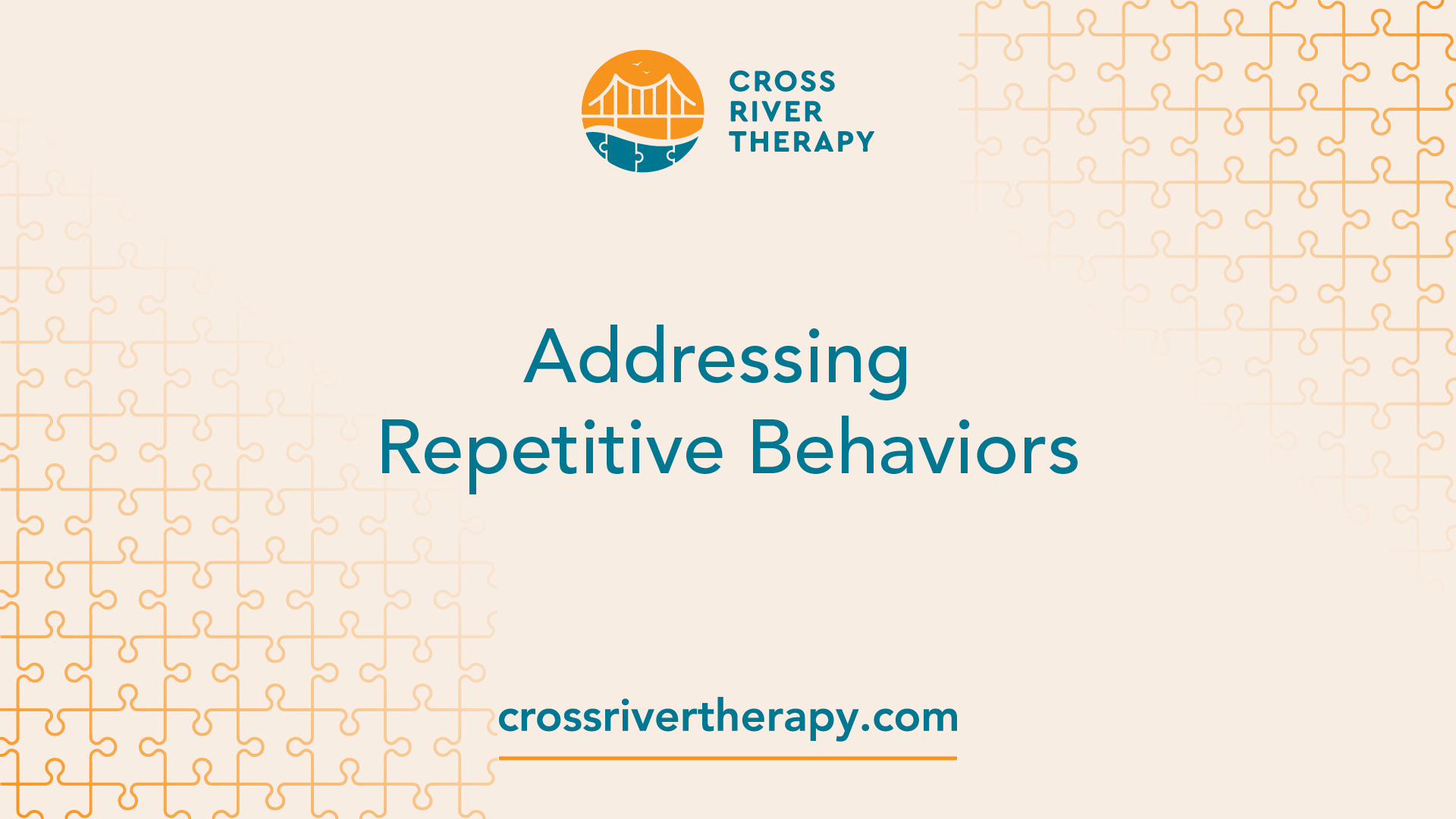Managing Repetitive Behaviors through ABA Therapy
Discover how ABA therapy tackles repetitive behaviors in children with autism.

Understanding ABA Therapy
ABA therapy, short for Applied Behavior Analysis therapy, has been utilized to assist children with autism and related developmental disorders since the 1960s. It is considered an evidence-based best practice treatment by the US Surgeon General and the American Psychological Association, indicating its high level of effectiveness, quality, and usefulness.
Evolution of ABA
The roots of ABA therapy can be traced back to the work of psychologist B.F. Skinner, who developed the principles of behavior analysis. These principles formed the foundation of ABA, emphasizing the study of human behavior and the application of techniques to bring about meaningful behavior change. Over the years, ABA therapy has evolved and become a well-established and widely recognized approach for individuals with autism.
Benefits of ABA
ABA therapy has garnered recognition and support due to its effectiveness in improving the lives of individuals with autism. A comprehensive review of research studies conducted by the National Autism Center found strong evidence supporting the effectiveness of ABA therapy. Children who received early intensive behavioral intervention based on the principles of ABA showed significant improvements in cognitive, language, and daily living skills compared to those who did not receive such intervention.
Some of the key benefits of ABA therapy include:
- Individualized Approach: ABA therapy is highly individualized, taking into account the unique needs and goals of each individual with autism. Treatment plans are tailored to address specific behaviors and challenges.
- Evidence-Based Practice: ABA therapy is grounded in research and evidence-based practice. It has undergone rigorous scientific testing to demonstrate its effectiveness in improving various skills and behaviors in individuals with autism.
- Promotes Skill Development: ABA therapy focuses on teaching and reinforcing positive behaviors while reducing challenging behaviors. It helps individuals with autism acquire and strengthen skills in areas such as communication, social interaction, daily living, and academic performance.
- Generalization of Skills: ABA therapy aims to promote the generalization of skills across different settings and situations. The skills learned during therapy sessions are practiced and reinforced in real-life contexts, leading to meaningful and lasting behavior change.
- Family Involvement: ABA therapy recognizes the importance of family involvement in the treatment process. Parents and caregivers are actively involved, learning strategies and techniques to support their child's progress outside of therapy sessions.
By understanding the evolution and benefits of ABA therapy, parents of children diagnosed with autism can make informed decisions about incorporating this evidence-based approach into their child's comprehensive treatment plan. ABA therapy offers a structured and effective means of addressing repetitive behaviors and promoting positive development in individuals with autism.
ABA Therapy Components
To effectively address repetitive behaviors, Applied Behavior Analysis (ABA) therapy employs various components that focus on understanding and modifying behavior. Two key components of ABA therapy are the behavior analyst's role and the use of positive reinforcement.
Behavior Analyst's Role
A critical aspect of ABA therapy is the involvement of a board-certified behavior analyst (BCBA) who plays a pivotal role in designing and overseeing individualized ABA programs. The BCBA customizes these programs based on the learner's specific skills, needs, interests, preferences, and family situation [1]. By conducting assessments, the behavior analyst identifies the target behaviors to address and develops strategies to promote positive behavior change.
The behavior analyst closely monitors progress, makes necessary adjustments to the therapy plan, and collaborates with other professionals, such as speech therapists or occupational therapists, to ensure comprehensive support for the learner. The involvement of a behavior analyst helps create a tailored treatment approach that maximizes the benefits of ABA therapy.
Positive Reinforcement
Positive reinforcement is a fundamental principle of ABA therapy. It involves providing a reward or praise in exchange for a desired behavior to strengthen that behavior over time. Positive reinforcement is an effective strategy for motivating children with autism to continue performing desired behaviors, creating an enjoyable learning environment, and building confidence and self-esteem.
By using positive reinforcement, ABA therapists aim to increase the frequency of desired behaviors and reduce problem behaviors. When a specific behavior is followed by something valued, such as a reward or praise, the individual is more likely to repeat that behavior in the future. Over time, positive reinforcement helps shape new behaviors and replaces unwanted behaviors with more appropriate ones.
In ABA therapy, positive reinforcement is tailored to the individual's preferences and interests, ensuring that the rewards are meaningful and motivating. This personalized approach helps maintain the individual's engagement, making the learning experience enjoyable and effective.
By incorporating the behavior analyst's expertise and utilizing positive reinforcement, ABA therapy provides a comprehensive approach to address repetitive behaviors in individuals with autism. These components work together to promote positive behavior change, enhance learning, and improve the overall quality of life for individuals and their families.
Addressing Repetitive Behaviors

Repetitive behaviors, also known as stereotypic behaviors, are a core feature of autism spectrum disorder. These behaviors can manifest in various ways, including repetitive actions, restricted interests, and a tendency towards rigidity and inflexibility. It is important to understand and address these behaviors to provide effective support and interventions for individuals with autism.
Types of Repetitive Behaviors
Repetitive behaviors in autism can be categorized into different types based on their characteristics and functions. These types include motor repetition, sensory repetition, and cognitive repetition.
- Motor repetition: Motor repetition involves physical movements such as hand flapping, body rocking, toe wiggling, and body freezing. These behaviors can help individuals with autism self-soothe, regulate emotions, and manage sensory input. By understanding the underlying reasons behind these motor repetitions, professionals can develop strategies to support individuals with autism in finding alternative ways to self-soothe and regulate their emotions.
- Sensory repetition: Sensory repetition refers to the fixation on specific sensory experiences or objects for comfort and emotional regulation. This can include seeking intense sensory input through touch, sight, sound, taste, or smell. Individuals with autism may engage in repetitive behaviors to regulate their sensory experiences and create a sense of predictability in their environment. Understanding an individual's sensory preferences and providing appropriate sensory supports can help reduce the intensity of these behaviors.
- Cognitive repetition: Cognitive repetition involves persistent thoughts, fixations, and repetitive verbal communication. This can include echoing words, phrases, or reciting scripts. These repetitive behaviors offer insights into the cognitive processing and communication styles of individuals with autism. Understanding the underlying reasons behind these cognitive repetitions can help professionals develop strategies to enhance communication and support individuals in expanding their communication skills.
Impact on Individuals
Repetitive behaviors in autism serve as coping mechanisms that provide comfort and predictability in a world that may feel chaotic and unpredictable for individuals with autism. These behaviors can help individuals regulate their emotions, manage sensory input, and create a sense of control in their environment [4]. However, it is important to recognize that these behaviors can also interfere with daily functioning, social interactions, and learning opportunities.
Understanding the impact of repetitive behaviors on individuals with autism is crucial for developing effective interventions. By addressing these behaviors, individuals with autism can be supported in finding alternative ways to self-regulate, engage in meaningful activities, and participate in social interactions. Applied Behavior Analysis (ABA) therapy offers targeted interventions and strategies to help individuals with autism manage their repetitive behaviors and enhance their overall quality of life.
To learn more about the effectiveness of ABA therapy in addressing repetitive behaviors and its outcomes, continue reading our article on ABA therapy and its impact on individuals with autism.
Effectiveness of ABA Therapy

ABA therapy, based on the principles of Applied Behavior Analysis, has been widely recognized as an effective treatment for individuals with autism. Numerous research studies have demonstrated the positive outcomes and benefits of ABA therapy, particularly in addressing repetitive behaviors.
Research Studies on ABA
More than 20 studies have established that intensive and long-term therapy using ABA principles improves outcomes for many children with autism. These studies have shown significant gains in various areas, including intellectual functioning, language development, daily living skills, and social functioning. A comprehensive review conducted by the National Autism Center found strong evidence supporting the effectiveness of ABA therapy. Children who received early intensive behavioral intervention based on the principles of ABA showed significant improvements in cognitive, language, and daily living skills compared to those who did not receive such intervention.
While there is substantial evidence supporting the effectiveness of ABA therapy, it's important to note that individual results may vary. Each child's progress depends on factors such as their age, severity of symptoms, and the intensity and duration of therapy.
Outcomes of ABA
ABA therapy provides individuals with autism a structured framework for behavior modification and skill development through individualized interventions. The outcomes of ABA therapy can be significant, helping individuals improve their quality of life and reach their full potential. Here are some of the outcomes that can be achieved through ABA therapy:
- Improved Communication: ABA therapy can help individuals develop and enhance their communication skills, including verbal and non-verbal communication. It focuses on promoting functional communication and reducing communication challenges.
- Reduced Repetitive Behaviors: ABA therapy targets repetitive behaviors commonly associated with autism. Through behavior interventions and strategies, it aims to decrease these behaviors and replace them with more appropriate and functional alternatives.
- Enhanced Social Skills: ABA therapy provides individuals with autism the opportunity to develop social skills and improve their interactions with peers and family members. It focuses on teaching social cues, turn-taking, perspective-taking, and other skills necessary for successful social interactions.
- Increased Independence: ABA therapy aims to enhance daily living skills, such as self-care, hygiene, and self-management. By breaking down complex tasks into smaller, manageable steps, individuals can develop the skills needed to become more independent in their daily lives.
- Academic Progress: ABA therapy can help individuals with autism improve their academic skills by implementing targeted interventions and teaching strategies. It focuses on individualized instruction to address specific learning needs and promote educational success.
These outcomes highlight the potential benefits of ABA therapy for individuals with autism. It is important to remember that ABA therapy is highly individualized, and specific treatment goals are tailored to meet the unique needs of each individual.
By understanding the effectiveness of ABA therapy, parents and caregivers can make informed decisions about the best approach to managing repetitive behaviors and supporting the overall development of their child with autism.
Criticisms and Controversies
While ABA therapy has been widely recognized for its effectiveness in addressing repetitive behaviors and promoting skill development in individuals with autism, it is not without its criticisms and controversies. It is important to acknowledge and consider these concerns when making decisions about therapy options.
Criticisms of ABA
One criticism of ABA is rooted in its historical association with the use of punishments alongside rewards. Although punishments are no longer utilized in modern ABA therapy, some critics argue that the repetitive nature of the therapy can still be challenging for children [5]. Additionally, concerns have been raised that ABA may focus excessively on eliminating behaviors rather than building skills. Some practitioners emphasize the need for therapy to center around teaching and reinforcing positive behaviors rather than solely targeting undesired behaviors [5].
Controversies Surrounding ABA
A controversial aspect of ABA therapy revolves around the perception that it aims to make individuals with autism conform to neurotypical standards rather than acknowledging and accommodating their unique needs. Some autistic self-advocates argue that alternative approaches, such as speech and language therapy, may be more beneficial for building skills and fostering independence [5]. It is essential to approach therapy decisions with sensitivity and respect for the diverse perspectives within the autism community.
Defenders of ABA therapy argue that its objective is not to change the way neurodiverse individuals think and feel but rather to enable independence and help them build on their strengths. The aim is to support their active participation in society to the greatest extent possible [5].
It is important for parents and caregivers to be aware of these criticisms and controversies, as well as to have open and ongoing discussions with professionals to ensure that the chosen therapy approach aligns with their values, goals, and the individual needs of their child.
For a comprehensive understanding of ABA therapy and its effectiveness, it is beneficial to explore the research studies conducted on ABA. These studies have demonstrated positive outcomes and the potential for significant improvements in intellectual and educational functioning for individuals who have participated in ABA treatment.
It is crucial to approach therapy decisions with careful consideration, seeking input from professionals, and being receptive to diverse perspectives. Ultimately, the goal should be to provide the most effective and supportive therapy for individuals with autism, taking into account their unique strengths, challenges, and needs.
ABA Therapy for Autism
ABA therapy, or Applied Behavior Analysis therapy, has proven to be highly effective in addressing repetitive behaviors in individuals with autism. This therapy provides a structured framework for behavior modification and skill development based on the core principles of Applied Behavior Analysis. One of the significant advantages of ABA therapy is its customization to meet the unique needs of each individual undergoing the therapy.
Customization of Therapy
ABA therapy recognizes that every individual with autism is different and requires an individualized approach. The therapy is tailored to address the specific needs and challenges of each person. A qualified behavior analyst will conduct a comprehensive assessment to identify the target behaviors and develop a personalized treatment plan. Throughout the therapy, the interventions are continuously adjusted based on the progress and needs of the individual.
The customization of ABA therapy allows for the development of targeted goals and strategies to address repetitive behaviors effectively. The therapist will work closely with the individual to identify the specific triggers and functions of the repetitive behaviors. By understanding the underlying reasons behind these behaviors, the therapist can implement interventions and techniques to reduce or replace the repetitive behaviors with more appropriate alternatives.
Involvement of Families
ABA therapy recognizes the importance of family involvement in the therapeutic process. Families play a crucial role in supporting the development of their loved ones who are receiving ABA therapy. The therapy aims to equip families with the knowledge and tools necessary to reinforce the skills and behaviors targeted in the therapy sessions.
By involving families in the therapy, they become active participants in the progress of their loved ones. The therapist will provide guidance and training to families on how to implement strategies and techniques at home to support the generalization of skills learned during therapy. This collaboration between the therapist and the family ensures consistency and reinforcement of the learned behaviors across various settings.
The involvement of families in ABA therapy helps create a supportive environment that promotes the generalization of skills beyond therapy sessions. It empowers families to provide ongoing support and encouragement to their loved ones, ultimately leading to better outcomes and increased independence [7].
In conclusion, ABA therapy offers a customizable approach to address repetitive behaviors in individuals with autism. By tailoring the therapy to meet the unique needs of each individual and involving families in the process, ABA therapy aims to foster positive behavioral changes and increase independence [7].
References
[1]: https://www.autismspeaks.org/applied-behavior-analysis
[2]: https://www.brighterstridesaba.com/blog/what-is-aba-therapy-science-behind-its-success
[3]: https://eastersealsar.com/the-power-of-progress-applied-behavior-analysis-aba-therapy-for-autism-and-personal-growth/
[4]: https://behavioralinterventionforautism.com/blog/examples-of-repetitive-behaviors-in-autism/
[5]: https://childmind.org/article/controversy-around-applied-behavior-analysis/
[6]: https://www.ncbi.nlm.nih.gov/pmc/articles/PMC9458805/
[7]: https://successaba.com/understanding-the-pros-and-cons-of-aba-therapy-a-comprehensive-guide/



